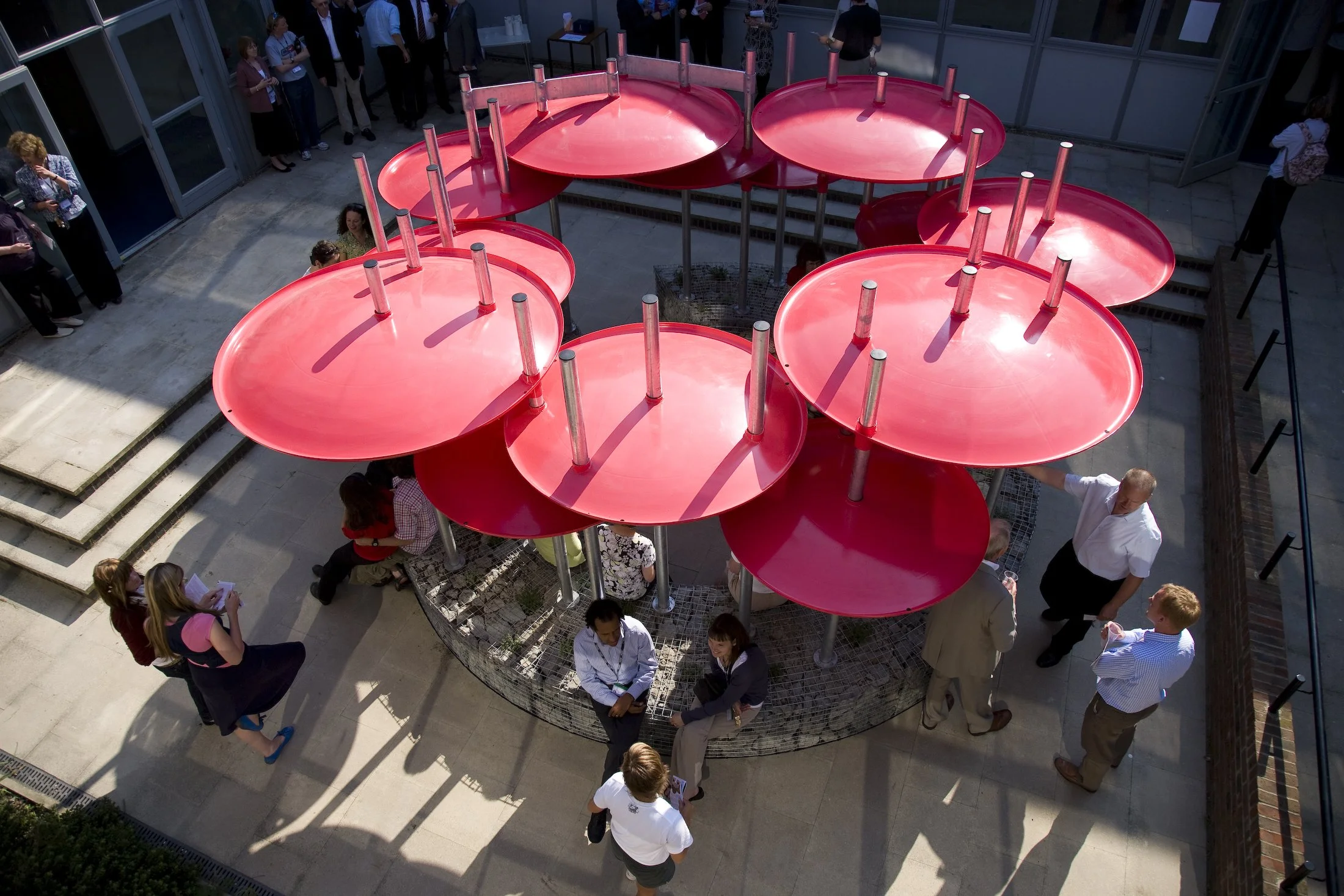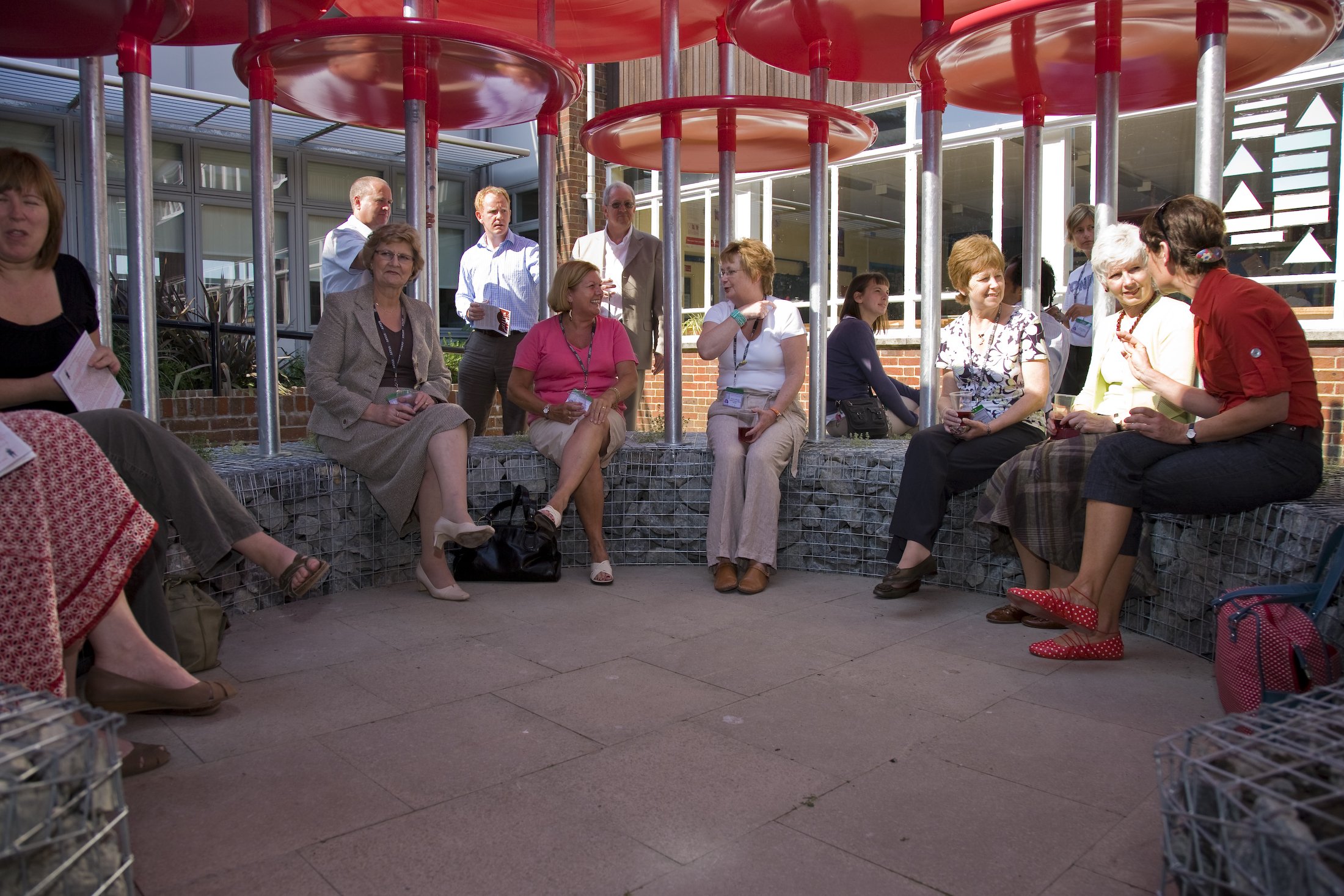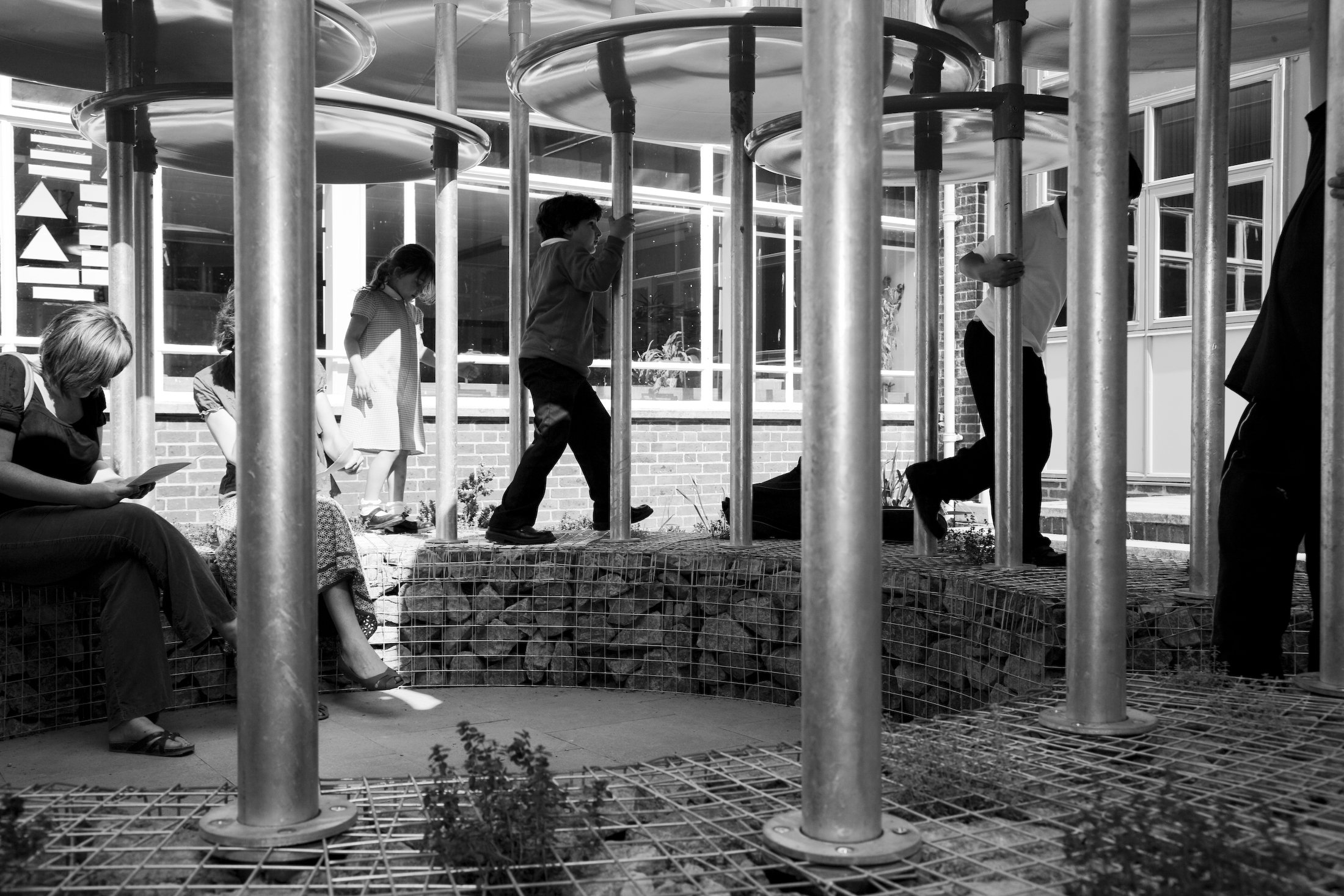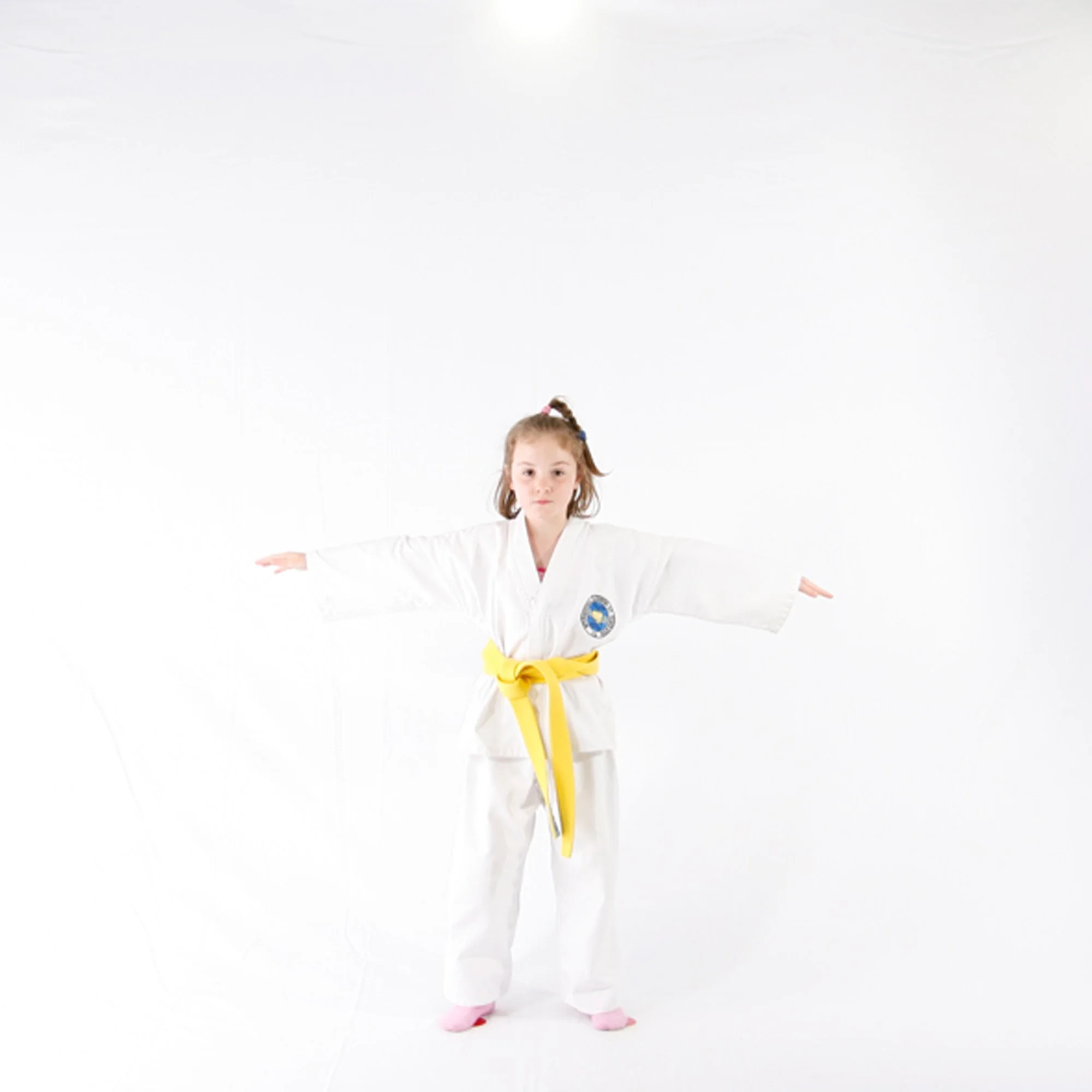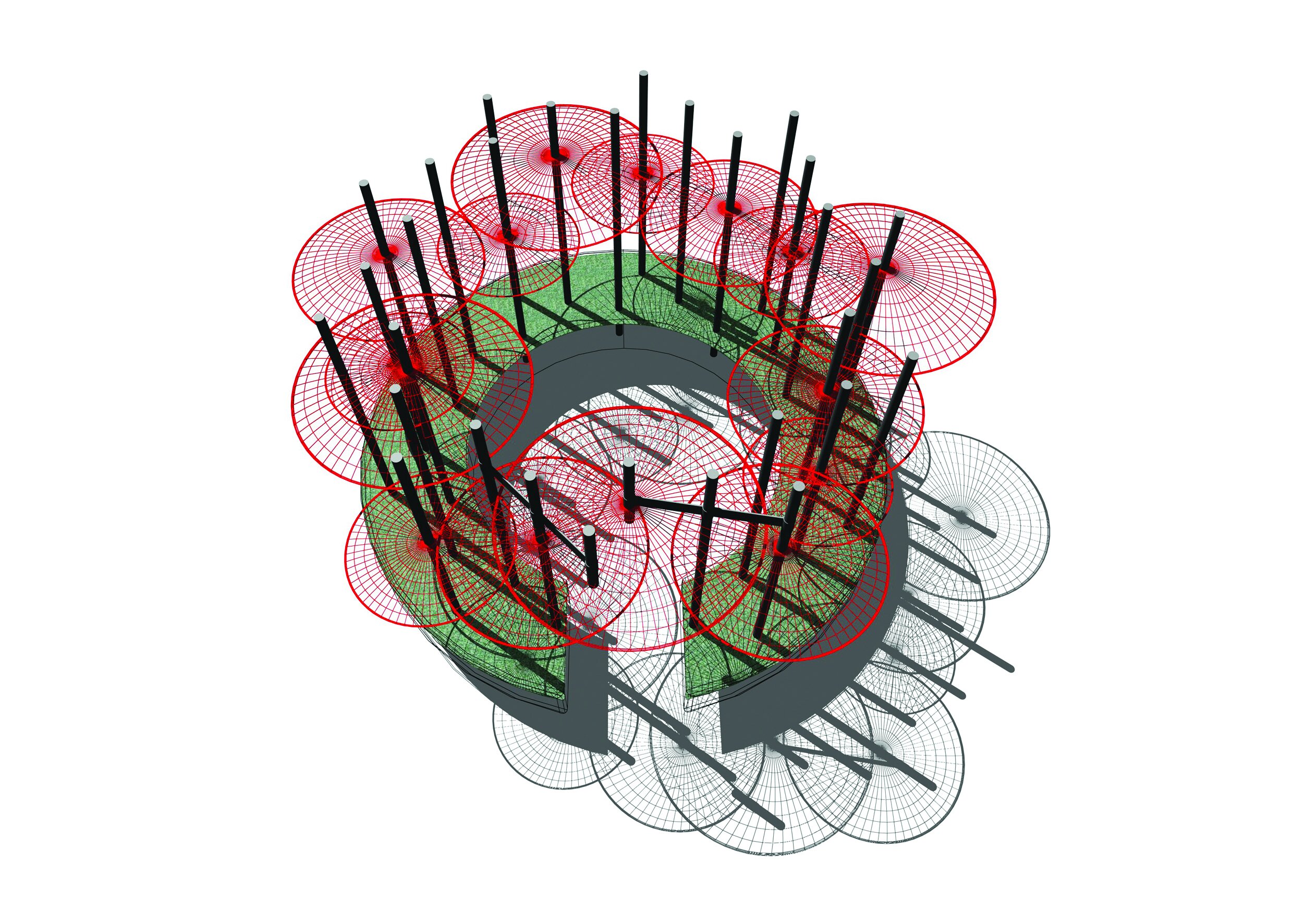
Our Space
2008
Steel & Stone
3m x 6m
Funded by Arts Council England
Location: Willingdon Community School, East Sussex
-
The seeds of a creative idea come from a multitude of places, ranging across the specifics of a particular project (client, site, costs, timescale), sometimes obliquely, sometimes head-on. For the Our Space project Will Nash began to formulate and interconnect his list of thoughts. In the process the school community became simultaneously; the raw data – an accumulation of lengths and heights; participants in multiple associated activities (a writing competition, animation workshops, photo-booth sessions, collection cards, memory bank, visits, exhibitions); the audience for, and commentators on, the design process; and the inhabitants of the finished piece in its courtyard. This was not merely a consultation, this was a seedbed.
-
It is easy to assume that ideas just ‘grow’ into a solution. No, they have to be wrestled with, translated, adjusted, thrown away and then found again. This is a process artists’ and designers often keep to themselves (perhaps because it is easier to keep your cards close to your chest). But Will and his colleagues not only generated a huge amount of data relationships and potential patterns, they also showed what they were doing at every stage back to the school - painstakingly imagining, representing and communicating variations on the developing themes, opening up the work and letting it be nourished by others, as well as nourishing all those involved.
-
Making the final selection of individual’s heights/lengths for the pavilion and juggling them into place to make a coherent whole is not just an art, it is a craft. Concentrated, repetitive and thoughtful readjusting and testing were required to generate a final piece that works functionally (for people to occupy together, to stand up in, to be protected from wind, rain and sun); that looks ‘right’ and is pleasurable to use; that could be assembled elsewhere, brought to site and constructed to budget; that can be integrated into the school curriculum (break-time, meetings, teaching, evening events) and procedures (health and safety, maintenance, security). All this takes time and effort – creativity is fun, but not necessarily easy. The dishes had to be properly aligned, overlapped, given structural rigidity (the lip does this as well as catching the rain). The uprights had to hold the dishes firmly, but not intrude on sitting, or feel too cluttered. The gabion seat had to form a rigid base for the structure, be right to sit on, and support plants. And all the dimensions had to fit the human bodies of everyone in the school community, both individually and as groups. This kind of growth is not a linear process but a complex geometric 3-D game.
-
As we sit beneath the canopies we don’t need to know any of this history; we can engage with the structure, materials and space as it stands, be part of its new life and future. But we might also consider if and why the Our Space pavilion makes sense of and with the space of the courtyard; why it seems to fit so well that we don’t even need to ask questions (‘why is it red?’). Is it because the intersecting circles and layers don’t simply create a new space within the school, but also beautifully symbolise its community, the variety of its inhabitants and their interconnectedness? Is this what makes good public art, something which brings coherence and resonance to a multitude of different variables, quietly resolves the complicated and unexpected processes of its making and does more than just get looked at?
Jos Boys
-
Our Space has been a fantastic process to observe, with Will building on his ability to engage creatively with people to develop a measuring system based on the human body which was then the basis for the dimensions of the Our Space Pavilion. The way Our Space created opportunities for lots of people to participate, whilst also allowing the artist to retain creative control, and the collaborative elements – with architects, a photographer and the community themselves – makes this an inspirational example of how a school project can really aspire to excellence.
Stephanie Fuller
Arts Council England, South East
June 09
“This is your space say the artists. Make your own damn art I often say. But can you believe artists? Is art your space, a free space?”
